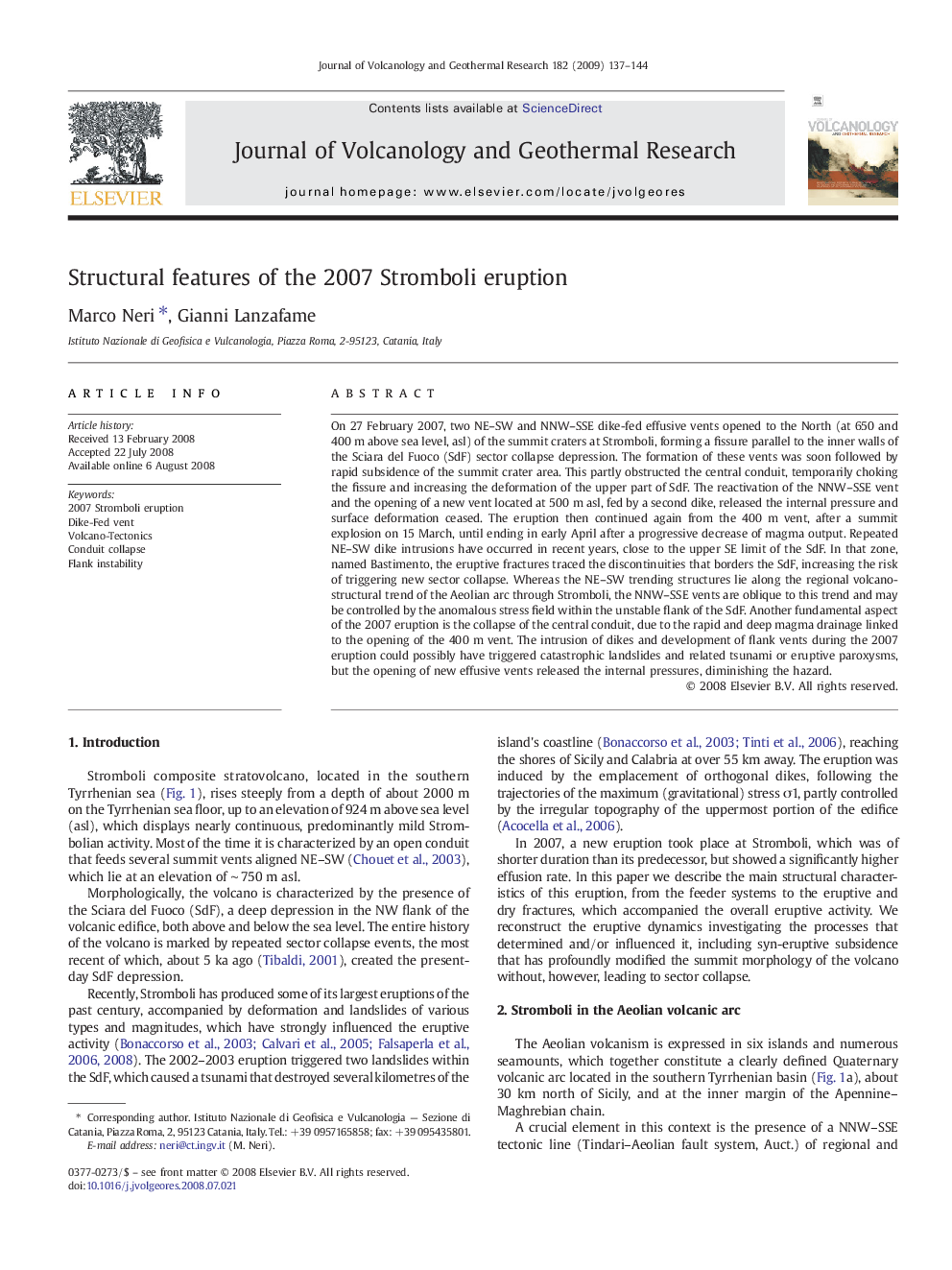| Article ID | Journal | Published Year | Pages | File Type |
|---|---|---|---|---|
| 4714209 | Journal of Volcanology and Geothermal Research | 2009 | 8 Pages |
On 27 February 2007, two NE–SW and NNW–SSE dike-fed effusive vents opened to the North (at 650 and 400 m above sea level, asl) of the summit craters at Stromboli, forming a fissure parallel to the inner walls of the Sciara del Fuoco (SdF) sector collapse depression. The formation of these vents was soon followed by rapid subsidence of the summit crater area. This partly obstructed the central conduit, temporarily choking the fissure and increasing the deformation of the upper part of SdF. The reactivation of the NNW–SSE vent and the opening of a new vent located at 500 m asl, fed by a second dike, released the internal pressure and surface deformation ceased. The eruption then continued again from the 400 m vent, after a summit explosion on 15 March, until ending in early April after a progressive decrease of magma output. Repeated NE–SW dike intrusions have occurred in recent years, close to the upper SE limit of the SdF. In that zone, named Bastimento, the eruptive fractures traced the discontinuities that borders the SdF, increasing the risk of triggering new sector collapse. Whereas the NE–SW trending structures lie along the regional volcano-structural trend of the Aeolian arc through Stromboli, the NNW–SSE vents are oblique to this trend and may be controlled by the anomalous stress field within the unstable flank of the SdF. Another fundamental aspect of the 2007 eruption is the collapse of the central conduit, due to the rapid and deep magma drainage linked to the opening of the 400 m vent. The intrusion of dikes and development of flank vents during the 2007 eruption could possibly have triggered catastrophic landslides and related tsunami or eruptive paroxysms, but the opening of new effusive vents released the internal pressures, diminishing the hazard.
